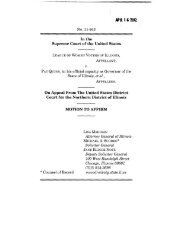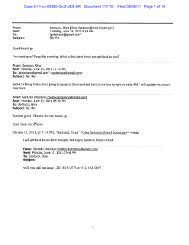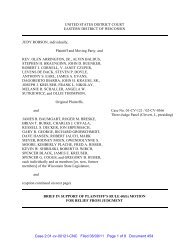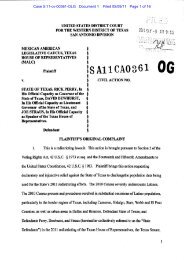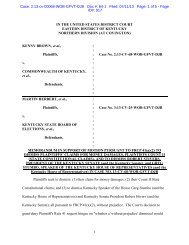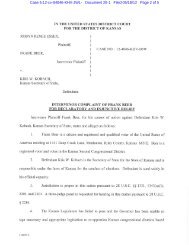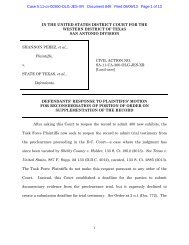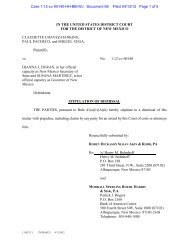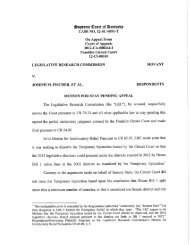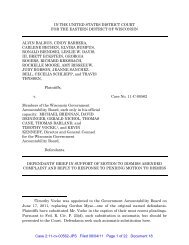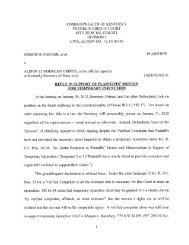Jurisdictional statement - About Redistricting - Loyola Law School
Jurisdictional statement - About Redistricting - Loyola Law School
Jurisdictional statement - About Redistricting - Loyola Law School
You also want an ePaper? Increase the reach of your titles
YUMPU automatically turns print PDFs into web optimized ePapers that Google loves.
14<br />
eral Assembly’s purpose was dramatically truncated<br />
by three of the lower court’s contested procedural and<br />
evidentiary rulings. First, the court decided to compress<br />
the trial of this important and complex case<br />
into two days of live testimony. Second, the panel<br />
would not permit any direct evidence regarding<br />
legislators’ purposes or motives in drafting and approving<br />
the 2011 plan, even though allegations of<br />
discriminatory purpose formed the foundation of the<br />
plaintiffs’ case. Third, although the panel insisted<br />
that much of the evidence regarding legislative intent<br />
be presented as legislators’ affidavits, the court also<br />
ruled that critical parts of these affidavits were inadmissible<br />
hearsay, even though the panel admitted<br />
live testimony from some legislators about other<br />
legislators’ <strong>statement</strong>s. See e.g., App. at 71a-72a.<br />
Despite these temporal and evidentiary limitations,<br />
plaintiffs presented essentially uncontested evidence<br />
that the General Assembly was motivated at least<br />
in part, by the purpose of increasing the BVAP in districts,<br />
for racial reasons, even when those districts<br />
were already electing black candidates. The legislators’<br />
affidavits and Rep. Sellers’ testimony regarding<br />
Republican leaders’ insistence on a minimum BVAP<br />
were uncontradicted at trial. In addition, plaintiffs<br />
presented expert testimony from Dr. Michael P.<br />
McDonald, Associate Professor of Government and<br />
Politics at George Mason University, that the pattern<br />
of legislative decisions regarding 21 House districts<br />
could best be explained as racial decision-making. In<br />
ruling that this testimony was insufficient to show<br />
unconstitutional use of race in the classification of<br />
voters, the lower court “grant[ed] Dr. McDonald the<br />
inference that race must have been a factor in<br />
changes involving exchanges of areas of low BVAP for<br />
areas of high BVAP” but nonetheless held that such



